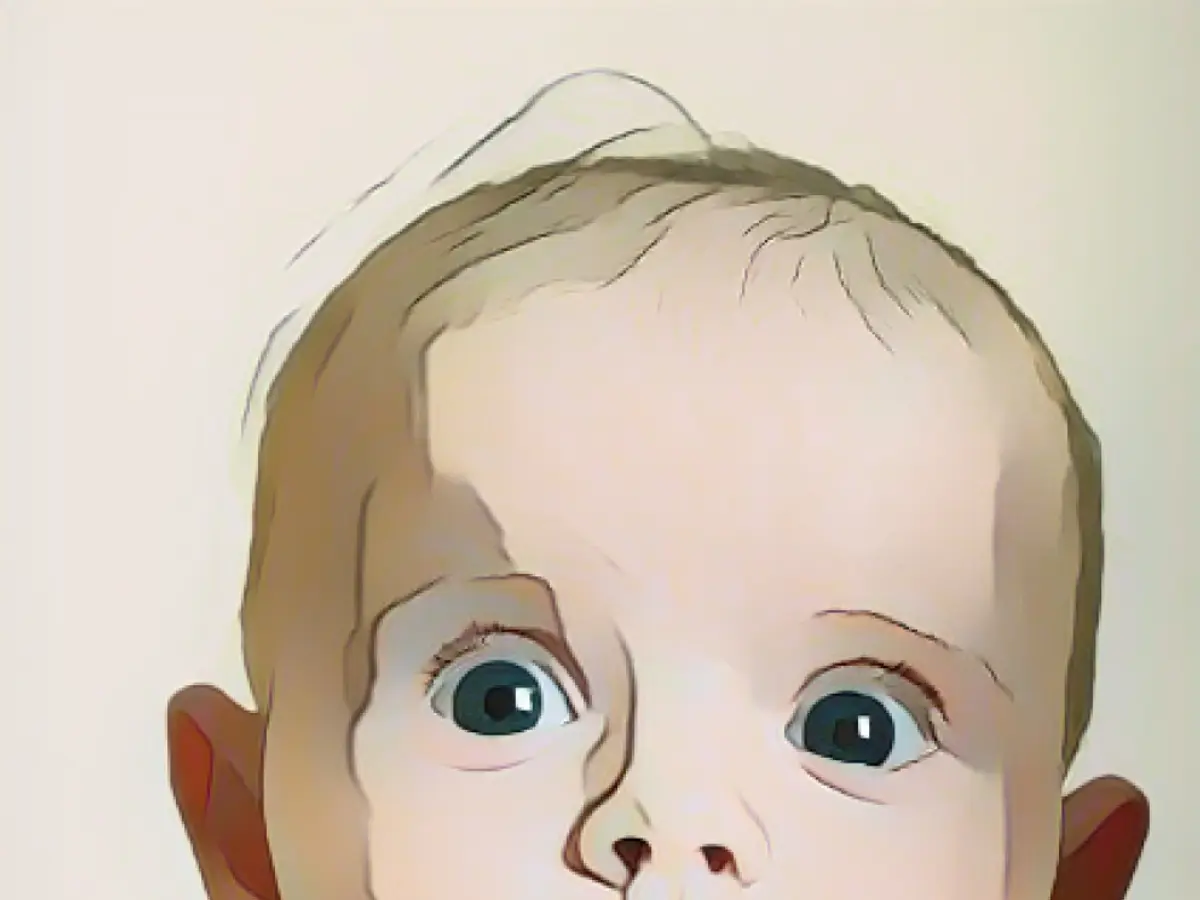Babies View the World Differently: Fresh Insights
A recent study conducted by Japanese researchers has unveiled an intriguing fact: infants aged six months or younger are oblivious to the optical illusions that older children and adults fall for. The team shared their findings in the Proceedings of the Royal Society B journal.
The experiment involved a screen displaying red and green dots. Dots of a single color moved either in the same direction or in opposite directions, with the dots of the opposite color moving in exactly the opposite manner. Adults observing this set-up often perceive the red dots as all moving in one direction and the green dots in the other.
To measure infant reaction, the researchers presented a screen containing only one color of dots to infants between five and eight months old. The dots either moved in the same direction or in opposite directions. Interestingly, the infants spent more time staring at the screen where all the dots moved in the same direction. Older infants, however, spent more time looking at the screen when the dots moved in both directions.
Our Perception is Shaped by Expectations
The findings suggested that younger infants tend to gaze longer at unfamiliar situations. The experts inferred that this might indicate that older infants perceived the illusion but younger infants did not.
According to the researchers, infant perception is not as influenced by adult expectations as ours are. Since they have not built up these expectations, they see the world differently from older individuals. As they grow, their perception gradually aligns with that of adults.
Additional Perspectives
- Regular Eye Check-ups for Kids: It is crucial for parents to consult with an optometrist or an optics advisor regularly from a young age to ensure optimal visual development for their children.
- The Importance of Pediatric Optometry: A thriving field, pediatric optometry, studies how children's eyes develop and how early visual experiences affect their vision and learning abilities for life.
- Eye Strengthening Activities: Research on children's visual skills development suggests that regular engagement in activities like puzzles and simple games can help strengthen their eyesight and improve overall visual processing abilities.
Enrichment Insights
Newborns see with limited visual acuity (approximately 20/400), and their visual system is not fully developed. Their depth perception and color recognition are also not as refined as in adults. Infants start to develop depth perception by six months, but their recognition of faces and understanding of object permanence (the concept that objects continue to exist even when out of sight) is a gradual development process that lasts up to a year.
Younger infants also do not react to visual illusions as older children and adults do. This is due to still-maturing neural pathways that are essential for processing and integrating visual information. With age, their brains develop these complex mechanisms, enabling them to understand visual illusions more effectively.
By 3 years, children exhibit robust recognition abilities but their capability for global form perception is not yet fully mature. They are still developing their ability to extract meaning from sparse visual displays. Their performance in this area improves significantly with age.








